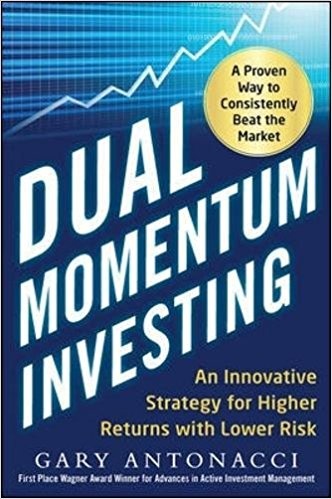
- December 30, 2019
- admin
- 4
Let me explain a simple investing rule that you can follow to invest in such best stocks without facing higher draw downs.
We know that investing for long term always provides higher returns, but that comes with higher draw downs. A simple Buy and Hold strategy might give you good returns, but how many investors can stick to their investments even after a fall of more than 50% of their wealth getting destroyed.
Not every investor is lucky to buy low and sell high, what If someone had invested during the peak of 2008 when Nifty was trading at 6300. By 2008 Oct, within ten months, Nifty came down to 2252, had lost 64%.
Even though by Nifty has moved to 12000, which is almost 88% increase between 2008 to 2019, but to make that 88% returns we need to go through draw down of 64%. That’s really very huge.
Markets though always move up in longer run, there are certain bear periods it has to go through. If we could have a fixed rule to stay out during such bear phases, we could avoid such draw downs. Why do people invest in stock market? To make higher returns , at least higher than fixed deposits as we take risk here.
Here’s the rule that we can follow, if Index returns for a quarterly period is less than Fixed deposit returns, we are going to stay away from markets and invest in liquid funds which can give 6% returns on an average per year.
Lets take average 8% per annum as FD returns. That’s 2% per quarter.
- If Nifty returns is greater than 2% in a quarter – Invest in stock market
- If Nifty returns is lesser than 2% in a quarter – Exit from stocks and invest in liquid funds
- Repeat
Here’s the last 13 years historical performance if we had followed this rule.
From 2006 Aug to till date, total returns would have been 165% with just -16% max draw down. During this period, there were in total of 2044 days, we stayed out of stock market and invested in liquid funds during that period, which gave us risk free 33.60% additional returns.
If you just Buy and Hold during the same period, by investing in Nifty at 3413, by now Nifty trading at 12000, your total returns would be around 249% which is much high but that comes with a higher cost, a huge draw down of 64%. Trust me, this is huge, normal investors panic when their investment value goes down more -20%, when it crosses -30%, they start hoping, by >-40% they start praying and when value goes down more than -50%, they just blame the markets and quit from stock market.
So do not just go by the returns, always check what was the risk involved to achieve that returns.
- The buy and hold strategy gives 249% returns with max dd of 64%, the score comes around 249/64=3.89
- Our fixed rule strategy gives 165% returns with -16% drawdown, the score comes around 165/16=10.3
Its obvious which is better in terms of both risk and returns. This investing rule was discussed in detail in the book Dual Momentum by Gary Antonacci.
source: squareoff.in historical data and Amazon.com: Dual Momentum Investing: An Innovative Strategy for Higher Returns with Lower Risk (8601419191574): Gary Antonacci: Books
If you liked this article, please do share share it (Whatsapp, Twitter) with other Traders/Investors.



We will know if Nifty returns less than 2% in a quarter only after quarter end right? So we pull and enter in debt market but what if the nifty raises by more than 2% in the next quarter while we are parked in debt? I didnt understand that bit.
When quarterly return loss than 2% people should exit from stock market by selling portfolio on stop making new investments?
Yeah, once quaterly returns moves more than 2%, we can resume investing in stock market.
Good strategy but I do it a different way. I invest fixed Sum every month in nifty bee 50%, junior bee25% and gold bee25%. Whenever nifty or nifty midcap hits below 100 DMA,I shift all units of nifty bee and jr bee to gold bee and shift back whenever the index returns above 100DMA. try it, it is simple and very effectively